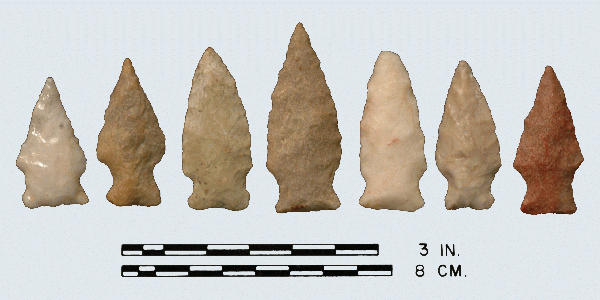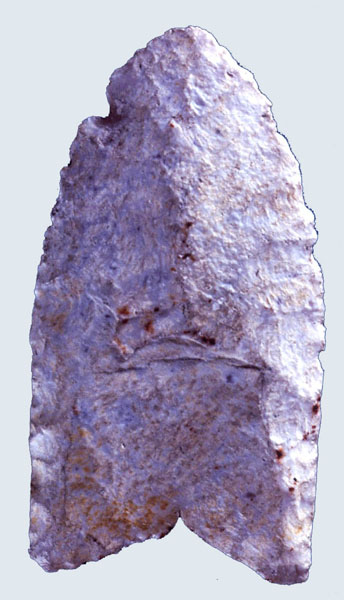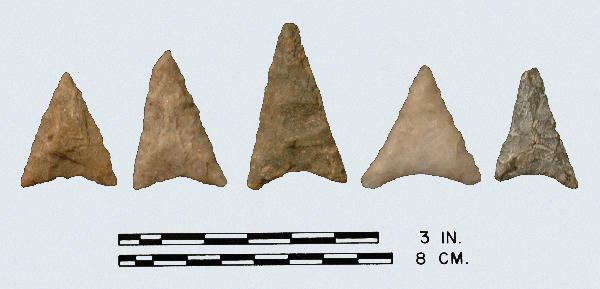
Halifax: quartz, quartzite, tuff, quartzite, quartz, chert, quartzite.
Type Side Notched Middle-Archaic
Defining Attributes
The Halifax point has a slender blade with a slightly restricted base. The base and side notches are usually ground.
Chronology
The Halifax point dates to the Middle Archaic period, 3500 to 2800 BCE. Coe (1964) radiocarbon dated the point to 3480 BCE at the Gaston site, North Carolina. McAvoy (1997) dated the point along the Nottoway River, Virginia from numerous hearth and pit features to 3500 to 2850 BCE.
Description
- Blade: The blade is usually long and narrow. The sides of the blade are slightly convex. Some examples are shorter with straight or concave sides, which appear to be the result of re-sharpening. Often, the maximum width occurs at two-thirds of their length from the tip.
- Base: The base is usually broad, straight, and ground. The base is slightly narrower than the maximum width of the blade. Side notches are broad and shallow, and frequently ground. Notches begin at the point of maximum width and continue to the base. In some examples the notch continues past the base, giving the impression of a stem rather than a side notch.
- Size: Length ranges from 29 to 56 mm with an average of 44 mm. Width ranges from 17 to 25 mm with an average of 20 mm. Thickness ranges from 8 to 11 mm.
- Technique of manufacture: Pressure flaking; a typical Halifax point is relatively thick and was worked from a core rather than a thin flake.
Discussion
Coe (1964) notes that the Halifax point type is relatively common in eastern North Carolina and Virginia; distribution is greater north and east of the Roanoke River Basin. The Halifax point is commonly made from quartz and is ubiquitous across the Piedmont and Coastal Plain of Virginia.
Defined in Literature
Coe (1964) originally defined the type based on points recovered from the Gaston Site in the Piedmont of North Carolina.
References




